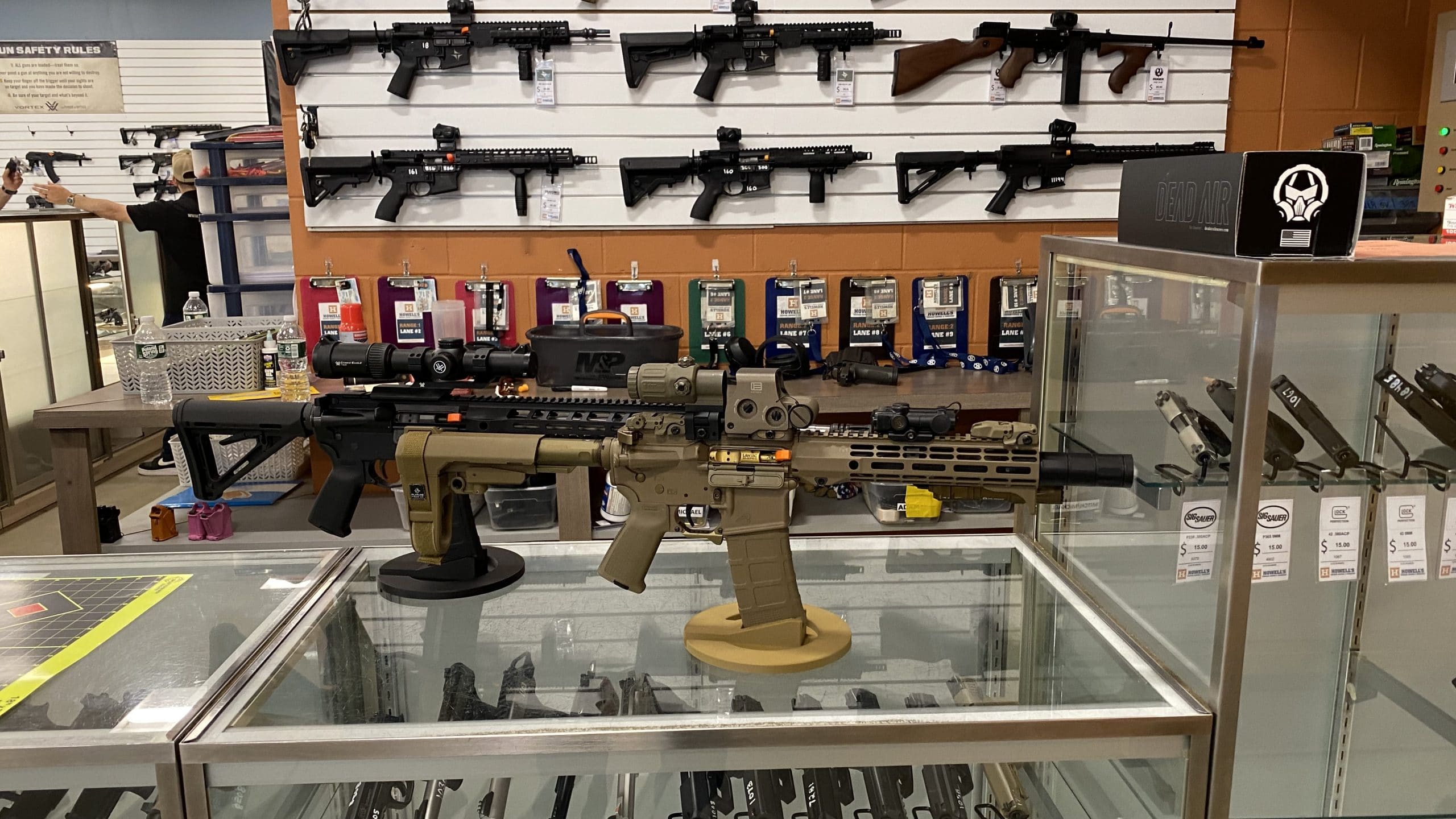
Categories:
Gun safety education is a crucial aspect of ensuring the well-being and protection of children in today’s society. With guns being prevalent in many households and communities, it is essential that children are educated about the potential dangers associated with guns, as well as how to handle them responsibly. By teaching kids about gun safety, we equip them with valuable knowledge and skills that can prevent accidents, injuries, or even fatalities.
The primary objective of gun safety education for kids is to promote responsible behavior around guns. It aims to instill in children a deep respect for the power and potential harm that guns can cause. Rather than evoking fear or curiosity, gun safety education helps children develop a healthy understanding and appreciation for guns as potentially dangerous objects that require caution.
One key reason why gun safety education is vital for kids is to prevent accidents. According to statistics from organizations like the Centers for Disease Control and Prevention (CDC), accidental shootings involving children occur more frequently than we would like to admit. By educating children about gun safety rules such as never touching a gun without adult supervision, keeping fingers off the trigger until ready to shoot, or always pointing the muzzle in a safe direction, we significantly reduce the chances of tragic incidents occurring.
Moreover, teaching kids about gun safety also empowers them with vital knowledge on what steps they should take if they encounter an unsecured gun outside their home.
In a world where children are constantly exposed to guns through various forms of media, it is crucial for parents and guardians to start teaching kids about gun safety from an early age. By introducing age-appropriate lessons on gun safety, we can help children develop a responsible and respectful attitude towards guns. For young children, the first step is to establish a foundation of understanding by explaining that guns are not toys.
Emphasize that they are dangerous and should never be touched without adult supervision. Through simple language and relatable examples, convey the seriousness of guns while avoiding fear or panic-inducing discussions. As children grow older, expand upon these basic principles by teaching them how to respond if they come across a gun accidentally. Encourage them to follow the “STOP! Don’t touch. Run away.
Tell an adult.” mantra, which reinforces the importance of not handling guns without permission. Additionally, teach them the significance of informing trusted adults immediately when they encounter guns in places such as friends’ homes or public areas. Furthermore, engage children in open conversations about responsible gun ownership within families or communities that may possess guns for self-defense or recreational purposes. Teach them the importance of secure storage mechanisms like locked cabinets or safes and explain why keeping ammunition separate from guns is vital.
When it comes to teaching kids about gun safety, open and honest communication is crucial. It is important for parents or guardians to have age-appropriate discussions about the potential dangers associated with guns. By addressing the topic openly, children can develop a deeper understanding and respect for guns, reducing the likelihood of accidents or curiosity-driven incidents. Start by establishing an open dialogue with your child.
Encourage them to ask questions and express their thoughts or concerns regarding guns. This will create a safe environment for discussion and ensure that they feel comfortable approaching you with any related issues in the future. Emphasize that guns are not toys and should never be handled without adult supervision. Explain to them that guns can cause serious harm or even death if mishandled, highlighting real-life examples when accidents have occurred due to negligence.
Use age-appropriate language and avoid using scare tactics, but be firm in conveying the importance of gun safety. Teach children about the different types of guns they might encounter, including pistols, rifles, and shotguns. Explain how each operates and ensure they understand that these weapons require proper training before handling them safely. Additionally, educate your child about what to do if they come across a gun outside of your home or in a situation where there is no adult supervision.
Teach them not to touch it but instead inform an adult immediately so that appropriate action can be taken.
When it comes to teaching kids about gun safety, one of the most crucial aspects is emphasizing the importance of secure storage. It is essential for parents and guardians to understand that children are naturally curious, and their curiosity can lead them to explore areas they should not, including places where guns may be stored. Therefore, taking necessary precautions to keep guns locked and out of reach is paramount in ensuring the safety of children.
The first step in secure storage involves investing in a high-quality gun safe or lockbox. These safes are designed specifically to provide a secure environment for guns, keeping them inaccessible to unauthorized individuals such as children. Ensure that the safe or lockbox you choose meets industry standards for security and reliability. Once you have obtained a suitable storage solution, it is crucial to educate your child about its purpose and significance.
Teach them that guns are not toys and should never be handled without adult supervision. Explain that guns should always be stored securely when not in use. Additionally, emphasize the importance of keeping ammunition separate from guns. Store ammunition in a locked container or separate safe from the guns themselves. By doing so, you further reduce the risk of accidents or misuse.
Regularly remind your child about gun safety practices and reinforce the concept of secure storage through age-appropriate discussions. Encourage an open dialogue where they can ask questions or express any concerns they may have regarding guns.
One crucial aspect of teaching children about gun safety is helping them understand the difference between real guns and toy guns. It is essential for children to recognize that real guns are not toys and should never be treated as such. By educating them about this distinction, parents and caregivers can significantly reduce the risk of accidents or dangerous situations. Firstly, it is important to explain to children that real guns are designed to cause harm and should only be handled by adults who have received proper training.
Emphasize that real guns can cause severe injury or even death if mishandled or used improperly. Reinforce the idea that toy guns, on the other hand, are harmless playthings meant for imaginative play. To help children differentiate between real and toy guns, encourage them to observe specific characteristics. Teach them about the weight difference between the two types of guns – real guns tend to be heavier due to their construction and metal components.
Explain how toy guns are often made from plastic or other lightweight materials. Additionally, teach children about visual differences such as color variations and design features that distinguish real guns from their toy counterparts. Educate them about key elements like trigger guards, barrels, and ammunition magazines found on real guns but absent in toy versions.
When it comes to teaching kids about gun safety, establishing clear rules is crucial in order to set boundaries and expectations. By doing so, children will understand the seriousness of handling guns and the potential dangers involved. Here are some key points to consider when establishing these rules:
1. Open Communication: Start by having an open conversation with your child about guns and their potential risks. Explain that guns are not toys and can cause harm if mishandled or misused. Encourage them to ask questions and express any concerns they may have. 2. No Access without Adult Supervision: Emphasize that children should never handle guns without adult supervision, regardless of whether the gun is real or a toy.
Make it clear that they should immediately inform a trusted adult if they come across a gun. 3. Safe Storage: Teach your child about the importance of storing guns securely in a locked cabinet or safe, with ammunition stored separately from guns. Explain that this helps prevent unauthorized access and reduces the risk of accidents. 4. Demonstrate Safe Handling: Show your child how to safely handle guns if they are old enough to understand and follow instructions responsibly.
Teach them basic safety measures such as keeping fingers off the trigger until ready to shoot, pointing the gun in a safe direction, and treating every gun as if it were loaded. 5.
When teaching kids about gun safety, it is crucial to emphasize responsible behavior and highlight the potential consequences of mishandling guns. By doing so, children will develop a deep understanding of the importance of adhering to safety protocols while handling guns. Start by discussing the severe consequences that can arise from improper gun handling. Explain that accidents involving guns can result in serious injuries or even death.
Encourage an open conversation, allowing children to ask questions and express their concerns. It is vital to strike a balance between educating them about the dangers without instilling fear. To illustrate the potential consequences, share age-appropriate stories or examples where irresponsible gun use had tragic outcomes. These real-life scenarios can resonate with children and make them realize that treating guns irresponsibly can have irreversible consequences for themselves or others.
Additionally, teach children about legal repercussions associated with mishandling guns. Explain how breaking gun laws can lead to criminal charges and legal penalties for both juveniles and adults. This aspect helps children understand that responsible behavior extends beyond personal safety; it also involves respecting laws put in place to protect everyone in society. Furthermore, stress the importance of always seeking adult supervision when encountering a gun.
Ensure children understand that they should never touch or handle a gun without permission from a trusted adult who has proper knowledge and training in gun safety.
When it comes to teaching kids about gun safety, one of the crucial aspects is instilling in them the importance of practicing safe handling techniques. By demonstrating and explaining proper handling methods, children can develop a respectful and responsible attitude towards guns. First and foremost, emphasize the cardinal rule: always treat a gun as if it is loaded. Teach children never to assume that a gun is unloaded, even if someone else has assured them so.
Show them how to check the chamber and magazine for ammunition before handling any gun. Next, teach children to keep their finger off the trigger until they are ready to shoot. This fundamental rule helps prevent accidental discharges and promotes responsible behavior around guns. Demonstrate how to properly grip a gun while keeping their index finger extended along the frame or slide until they are ready to fire.
Furthermore, teach kids about muzzle awareness – understanding where the barrel of a gun is pointed at all times. Emphasize that they should never point a gun at anything they do not intend to shoot or destroy. Encourage them to maintain control over the direction of the muzzle by keeping it pointed in a safe direction. Finally, explain how important it is for children to ask for permission before handling any gun and ensure adult supervision during practice sessions.
Reinforce that guns should only be handled under appropriate circumstances such as during supervised training or when engaged in lawful hunting activities.
Teaching children about gun safety is an essential responsibility for parents and caregivers. One crucial aspect of this education is instructing kids to report any unattended guns they come across. By emphasizing the importance of reporting, we can help prevent accidents, promote responsible behavior, and create a safer environment for our children. First and foremost, it is essential to teach children that finding an unattended gun is not something to be taken lightly.
Explain the potential dangers associated with guns and highlight the importance of responsible gun ownership. Emphasize that their safety comes first, and they should never touch or play with any gun they find. To encourage reporting, establish an open line of communication with your child. Create a safe space where they feel comfortable discussing sensitive topics like guns without fear of punishment or judgment.
Encourage them to approach you or another trusted adult immediately if they discover an unattended gun. Assure them that their actions will be praised rather than criticized. Additionally, teach children how to identify a real gun versus a toy or replica gun. Explain the distinct characteristics such as weight, color, and shape that distinguish real guns from toys or other objects.
This knowledge will enable them to recognize when a potentially dangerous situation arises. Role-playing scenarios can also be an effective tool in teaching kids how to respond when encountering an unattended gun.
When it comes to teaching kids about gun safety, one of the most effective approaches is leading by example. Children are keen observers and tend to imitate the behavior they see around them. Therefore, as responsible adults, it is our duty to model safe and responsible gun ownership practices. The first step in modeling safe gun ownership is ensuring that guns are securely stored at all times.
Guns should be locked away in a safe or secure cabinet, with ammunition kept separately. By doing so, children understand that guns are not toys and that access to them requires adult supervision. Another important aspect of modeling safe gun ownership is demonstrating proper handling and usage techniques. Always treat a gun as if it were loaded, even if you know it isn’t.
Show your child how to check if a gun is loaded before handling it and teach them never to point a gun at anyone, even if they believe it’s unloaded. Furthermore, reinforce the importance of communication around guns. Encourage your child to immediately notify an adult if they come across an unattended gun or witness someone mishandling one. By fostering open dialogue about guns, children will feel comfortable discussing any concerns or questions they may have.
Additionally, emphasize the concept of responsible shooting practices when teaching kids about guns. This includes discussing the importance of using designated shooting ranges or appropriate outdoor spaces for target practice and always adhering to local laws regarding gun use.
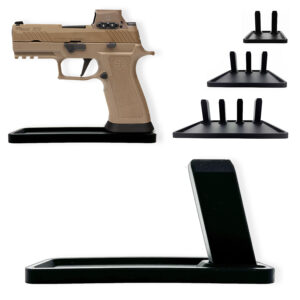

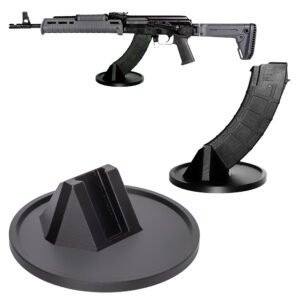


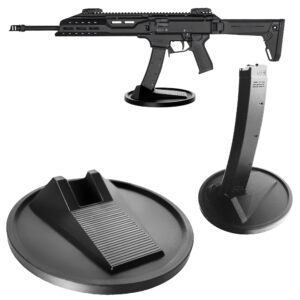

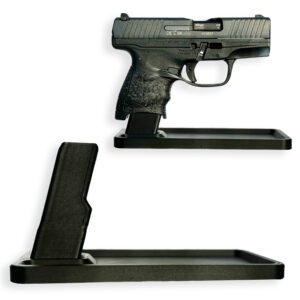
Colt
Colt M4 Carbine
Colt LE6920
Colt AR-15 A4
Daniel Defense
DDM4 V7
DDM4 V9
DDM4 V11
DDM4 ISR (Integrally Suppressed Rifle)
Smith & Wesson (S&W)
M&P15 Sport II
M&P15 Tactical
M&P15T
Bravo Company Manufacturing (BCM)
BCM Recce-16
BCM Recce-14
BCM MCMR Series
Aero Precision
M4E1 Series
AC-15
AR15 Pistol (Various Configurations)
Ruger
Ruger AR-556
Ruger SR-556
Ruger AR-556 MPR (Multi-Purpose Rifle)
Springfield Armory
Saint Victor
Saint Edge
Saint AR-15
PSA (Palmetto State Armory)
PSA PA-15
PSA AR-V
PSA Jakl (AR Pistol)
FN America
FN 15 Tactical Carbine
FN 15 Patrol
FN 15 DMR
Wilson Combat
Recon Tactical
Super Sniper
Protector Carbine
SIG Sauer
SIG M400 Tread
SIG M400 Elite
SIG M400 SDI
LWRC International
IC DI (Direct Impingement)
IC SPR
IC A5
Bushmaster Guns
XM-15 QRC
Bushmaster MOE
XM-15 Patrolman
Rock River Arms
LAR-15 Entry Tactical
LAR-15 Predator
LAR-15 Elite Comp
Stag Arms
Stag 15 Tactical
Stag 15L (Left-Handed Models)
Stag 15 Valkyrie
Noveske Rifleworks
Noveske Gen 4 N4
Noveske Space Invader (AR Pistol)
Noveske Recon
Anderson Manufacturing
AM-15 Optic Ready
AM-15 M4 Carbine
AM-15 Precision Rifle
Adams Arms
AA-15 Piston Rifle
P2 AARS (Adams Arms Rifle Series)
Black Rain Ordnance
SPEC15 Series
BRO Predator
Fallout 15
Diamondback Guns
DB15 Series
DB15CCMLB
DB15EB
Del-Ton Inc.
DTI-15
Del-Ton Echo 316H
Sierra 316M
Windham Weaponry
Windham SRC
Windham VEX-SS
Windham RMCS-4 (Caliber Conversion System)
Christensen Arms
CA-15 G2
CA-15 Recon
CA-15 Titanium Edition
Patriot Ordnance Factory (POF-USA)
Renegade Plus
P415 Edge
Revolution DI
LaRue Tactical
PredatAR
OBR (Optimized Battle Rifle)
LaRue Stealth 2.0
Battle Arms Development
Workhorse Patrol Carbine
BAD556-LW (Lightweight)
Authority Elite Rifle
Faxon Guns
Ascent AR-15
FX-19 (AR Pistol)
Streamline Ultralight Series
KE Arms
KE-15 SLT (Super Lightweight Tactical)
KE-15 Scout Carbine
Primary Weapons Systems (PWS)
MK1 MOD 2-M
MK116 PRO
MK107 (Piston AR Pistol)
ZEV Technologies
ZEV Core Elite Rifle
ZEV AR15 Billet Rifles
Franklin Armory
BFSIII AR-C1
Militia Model
F17-L (Chambered in .17 WSM)
Seekins Precision
SP15 DMR
NX15 Skeletonized Rifle
Havak Bravo
Aero Precision (Additional Models)
EPC-9 (Pistol Caliber ARs)
VG6 AR Rifles
Barrett Guns
REC7 DI
REC7 Gen II
CMMG
MK4 RCE
Resolute 300
Banshee (AR Pistol)
DPMS Panther Arms
Panther Oracle
Panther LR-308
H&K (Heckler & Koch)
HK MR556A1
HK416 (Military Variant)
Rock Island Armory (Armscor)
VR-80 Tactical AR (Shotgun AR Platform)
Troy Industries
Troy SPC-A3
Troy PAR (Pump Action AR)
Wilson Tactical
Tactical Recon AR
Protector Series
F1 Guns
FDR-15 Skeletonized Rifle
BDRx-15 Series
Juggernaut Tactical
JT-15
JT-10 Precision Rifle
AeroSurplus
Surplus AR-15 Rifles (Budget Models)
Thunder Tactical
AR-15 Basic Carbine
Tactical Builder Sets
Radical Guns
RF-15
Forged AR-Series
Dark Storm Industries
DS-15 Featureless Rifles
DS-10 Typhoon
DRD Tactical
Paratus
Aptus AR Rifles
Bear Creek Arsenal
BCA-15
AR Complete Upper Builds
Aero Survival Rifles (ASI)
ASR Tactical Series
Tactical Edge
WARFIGHTER Series
AR-15 Lightweight Rifles
Lone Star Armory
TX15 DMR
TX15 Carbine
HERA Arms
HERA H7
HERA AR-15 Lower Builds
IWI (Israeli Weapon Industries)
Zion-15
DRD Tactical
Tactical Modular Rifles
Quick-Takedown Rifles
V Seven Weapons
1776 Rifle
Hyperlite Rifle
Core Rifle Systems
Core15 Tac III
Core15 Patrol Rifle
Armalite (Original AR-15 Creator)
M15 Tactical
M15 A4 Carbine
DEF15 (Defensive Sporting Rifle Series)
PSA (Palmetto State Armory Additional Models)
PSAK-47 Hybrid (AR-AK Style Hybrid)
PSA Dagger (Pistol Caliber Configurations)
Odin Works
OTR-15
Odin Recon Rifle
Maxim Defense
MDX-508 PDX (Compact AR Pistol)
MDX-510 Rifle